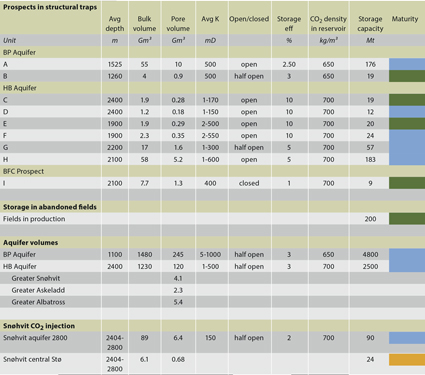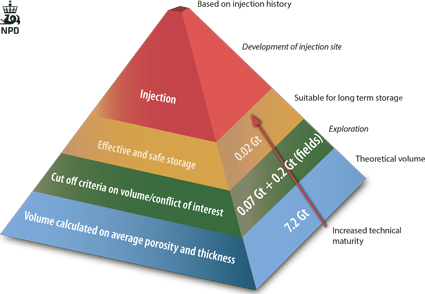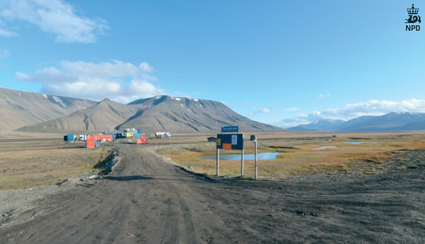6.2.3 - Summery
The main results of this study are displayed in the table below and illustrated by the maturation pyramid. The aquifers in the Jurassic Realgrunnen Subgroup are well suited for sequestration, and their storage potential has been quantified. Additional storage in other aquifers is possible. A theoretical storage potential of 7.2 Gt is identified in the regional aquifers. Since some of these areas may have a potential for petroleum exploration and exploitation, the storage potential in the aquifer is classified as immature.
In the near future, the CO2 available for injection in the Barents Sea is likely to come from natural sources such as CO2 associated with methane in the gas fields. The evaluation indicates that there is a potential for safe storage of more than 500 Mt CO2 in structural traps in the southern Barents Sea. Some of these traps are close to the areas of field development and production. The main uncertainties relate to the quality of the seal and to the possibility of encountering hydrocarbons in the traps.
CO2 injection can be used to mobilize residual oil, which is abundant in the Realgrunnen Subgroup. The potential for such utilization of CO2 is shown by a simulation study of prospect A. The results indicate that large amounts of CO2 which can be safely stored in prospects could be dedicated to oil recovery from residual oil and thin oil zones. Analysis of this potential is beyond the scope of this atlas.
Gas production started in the southern Barents Sea in 2007. In the future, when gas-bearing structures are depleted and abandoned, they will have a potential for development as storage sites. A simple calculation revealed a potential of around 200 Mt in four of these structures.

Fig-6-099

Fig-6-100
